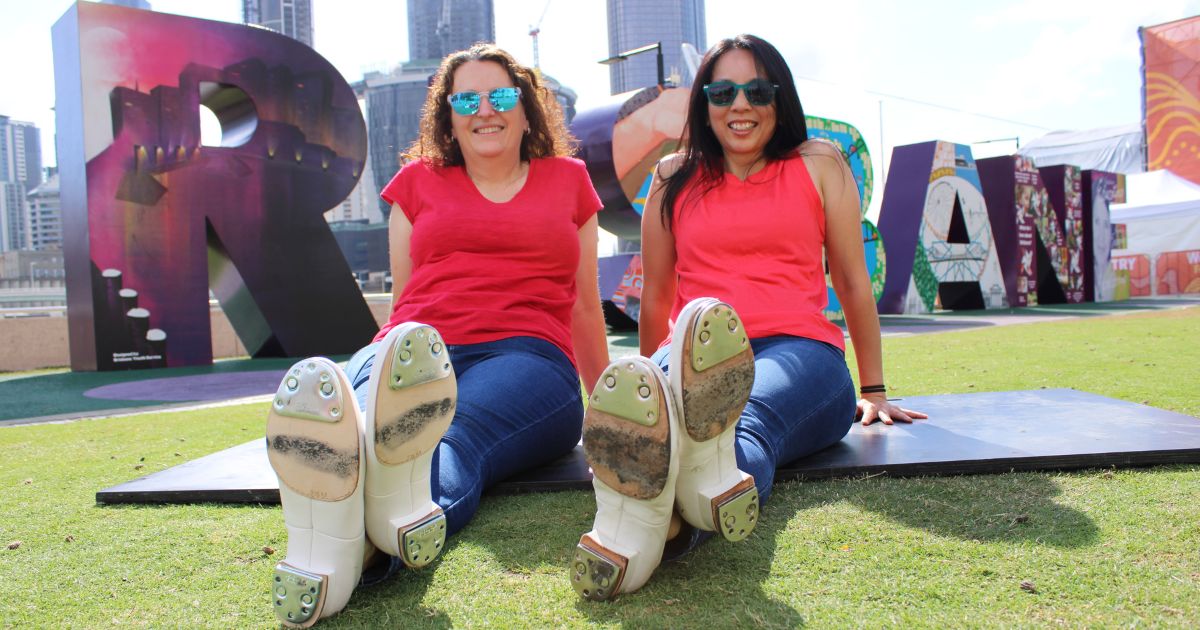Amanda Lim of Confidance Cloggers introduces us Clogging, a modern version of an 18th century American folk tradition.
The dance style of clogging has taken root in Brisbane in recent decades, cultivating a devoted following amongst local clubs. With origins in 18th century American folk traditions, clogging fuses elements from folk dances introduced by European immigrants with African and Native American rhythms.
Like its close cousin, tap dancing, clogging utilizes the feet as instruments to produce complex rhythmic patterns and dance motions. A key difference, however, is that clogging routines are often verbally cued rather than memorized, allowing the flexibility to join dancers in different clubs. The term ‘clogging’ often conjures up imagery of wooden clogs however dancers wear shoes that are similar to tap shoes. The main difference with the taps on the shoes is that the tap shoe employs a single plate on both the heel and toe whereas clogging shoes have double plates.
Introduced to Australia by square dancers in the 1980s, there are now clogging clubs across every state and territory. Unlike traditional dance studios, clogging communities operate more as social clubs with members from all walks of life and ranging in age from primary school children to retirees. This broad appeal stems from clogging’s unique blend of physical and mental stimulation as well as a strong sense of community. It keeps bodies active through cardiovascular dance moves while also engaging the mind. With an emphasis on inclusion, lessons are structured to engage dancers at every stage of their clogging journey and fitness.
The multi-generational clogging community promotes musical inclusiveness through its music selections. Dancers ranging from children to seniors come together to moves set to an eclectic array of genres. From classic country to modern pop mashups featuring artists like Dua Lipa and Ed Sheeran, music tastes span decades.

Standardized cue sheets take the confusion out of learning routines sight-unseen. Through a centralized Australian Clogging Association database, clubs across the nation can easily access step breakdowns and routines. Also, a national dancelist ensures familiarity wherever dancers may travel to. No matter which club a clogger is visiting, they will be familiar with at least a few routines on the program. This commitment to inclusiveness and accessibility reinforces clogging’s welcoming spirit.
Beyond exercise, clogging clubs provide meaningful community. Dancers support one another, form fast friendships and find purpose through performance. The social interaction can be especially impactful for seniors and those at risk for isolation. Club outings and weekend workshops foster robust regional networks as well.
With regional workshop held several times a year and an annual National Convention that rotates through each state, clogging is an activity that provides many opportunities to travel.
Here in Brisbane, the community consists of clubs in Brisbane City, Runcorn, Kenmore, Lutwyche and Chermside. They regularly perform at the Ekka and at other events around the city. In 2023, the Confidance Cloggers also competed in the Brisbane Performing Arts Challenge and winning 1st prize in the Mature and Motivated category.
With rhythmic footwork set to catchy modern tunes, clogging has never been more accessible or relevant. Its combination of cultural preservation, exercise and social community leaves people of all walks united in dance. As with its folk traditions, clogging is an activity for everyone.
FIND OUT MORE
Website: www.confidancecloggers.com
Facebook: https://www.facebook.com/confidancecloggers
Instagram: @confidancecloggers
TikTok: @confidancecloggers


